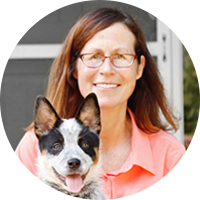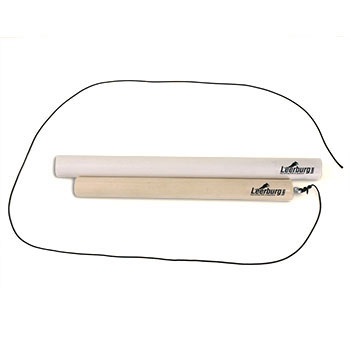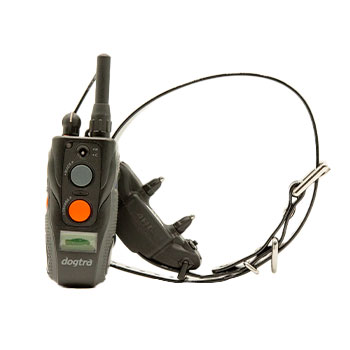May 13, 2011
I have a serious problem with my dog coming when called.
Full Question:
I am hoping you can help me with a problem I am having with my female German Shepherd "Gracie." Gracie is now 14 month old, she knows the basic obedience commands, but refuses to obey on recall. The minute she hears the door she will try to bolt through the door and refuses to come back until she is ready. We will live in a rural community in Fairbanks, Alaska and so far this has not caused a problem, but it is extremely frustrating as well as posing a potential future problem. She does chase people and horses. I am quite concerned but do not know how to break her habit. I did go ahead and ordered a training collar in hopes this will break her, but I am not sure if this is the right thing to do. Any suggestions? 
 Ed's Answer:
Ed's Answer:
There are a number of things that need to be considered to correct this problem. The electric shock collar is the last on the list and probably not needed.
Every single obedience command follows 3 simple steps. First we teach the dog the meaning of the command. Second, we teach the dog that once he knows a command and then refuses to do what's asked he gets corrected for it. Third, we teach the dog that he must perform the command under distraction or he is corrected.
A dog can never be corrected for not "coming" if it does not know the meaning of the word "come." So the first thing that needs to be determined is if she knows the word. I assume she does because you said that she has gone through basic obedience. So this dog needs to learn that it will be corrected for not coming.
This should not be done in the back yard. There are too many distractions for this dog out there. I would begin by putting a prong collar and a normal leash on the dog in the house. I would put here in a "Down Stay" in the living room and then have someone open the door like they were going outside. At that moment I would call her to me. If she goes to the door rather than to you (your assistant does not allow her to go outside), you calmly (without screaming or raising your voice) walk over pick up the leash and give her a level 10 (on a scale of 1 to 10) correction for not "coming." In these circumstances I correct several times as I back up to the point where I was when I called her. All the while saying "Come !!!- You Come!!!"
The key is to sound firm and not mad. There is a big big difference here and novice trainers a have a problem not sounding mad.
When you get back to the point where you were when you called her, you stop (she should be considerably upset if the corrections were firm or hard enough). Wait a second or two and then praise her and show her that you do not hold a grudge.
This training continues until the dog minds under every distraction in the house. We want her to mind when the back door is wide open and she needs to run by it to get to you. When you get to that stage of training it is best to put a 30 foot line on her and not a leash. If the dog bolts outside it is always easier to catch her again if she is dragging a 30 foot line. They never know where the end of the line is. But again, when you catch her, the corrections are severe. I have one simple way to look at corrections: "ONE GOOD CORRECTION IS WORTH 100 NAGGING CORRECTIONS."
A point not to forget is that the correction is actually a series of corrections all the way back to the point where you originally were when you first called the dog. Also this process can take days to accomplish. Do not try and rush through this in one or two training sessions. Then when you get to the point where you are outside, you always have her drag the 30 foot line. When she is 100% with the line on, you can shorten it to 10 feet, then 3 feet, then a foot long line attached to the collar.
Very few dogs do not respond to this training. If you want to get then entire program I recommend you buy my video titled Basic Dog Obedience. This tape covers this program and a lot more. It is a no nonsense approach to dog training.
The following are a list of the biggest mistakes novice trainers make, don't let yourself fall into one of these traps:
They don't praise enough when a dog does the command properly. You really need to exaggerate the praise when you dog train (men have more of a problem with this than women - it’s an ego thing I think).
They start the correction phase to soon. In other words, they start to correct the dog before it understands what the command means. That's simply unfair to the dog. You need to be 100% sure the dog understands what you are asking him to before you correct him for not doing it.
Novice trainers try and teach new commands in places where the distractions are too high. A perfect example of this is in an obedience class. You don't try and teach a new command in a obedience class with 20 other dogs near by. That's crazy, you will never see a professional trainer take his own personal dog into and obedience class and try and teach it a command. This is why I am not a proponent of these 8 week or 10 week obedience classes. Teach your dog at home in your kitchen or back yard. Then when the dog is through the learning and correction phases take him to class and use the class to teach your dog to mind under the extreme distraction of 20 other dogs.
Novice trainers forget to praise after a correct. When you correct your dog you are adding stress to the dog. When you praise your dog you are letting some of that added stress out of the dog. It’s always necessary to show the dog that you are not mad at him after a correction, by praising a little and saying "OK, you screwed up but I still love you."
Every single obedience command follows 3 simple steps. First we teach the dog the meaning of the command. Second, we teach the dog that once he knows a command and then refuses to do what's asked he gets corrected for it. Third, we teach the dog that he must perform the command under distraction or he is corrected.
A dog can never be corrected for not "coming" if it does not know the meaning of the word "come." So the first thing that needs to be determined is if she knows the word. I assume she does because you said that she has gone through basic obedience. So this dog needs to learn that it will be corrected for not coming.
This should not be done in the back yard. There are too many distractions for this dog out there. I would begin by putting a prong collar and a normal leash on the dog in the house. I would put here in a "Down Stay" in the living room and then have someone open the door like they were going outside. At that moment I would call her to me. If she goes to the door rather than to you (your assistant does not allow her to go outside), you calmly (without screaming or raising your voice) walk over pick up the leash and give her a level 10 (on a scale of 1 to 10) correction for not "coming." In these circumstances I correct several times as I back up to the point where I was when I called her. All the while saying "Come !!!- You Come!!!"
The key is to sound firm and not mad. There is a big big difference here and novice trainers a have a problem not sounding mad.
When you get back to the point where you were when you called her, you stop (she should be considerably upset if the corrections were firm or hard enough). Wait a second or two and then praise her and show her that you do not hold a grudge.
This training continues until the dog minds under every distraction in the house. We want her to mind when the back door is wide open and she needs to run by it to get to you. When you get to that stage of training it is best to put a 30 foot line on her and not a leash. If the dog bolts outside it is always easier to catch her again if she is dragging a 30 foot line. They never know where the end of the line is. But again, when you catch her, the corrections are severe. I have one simple way to look at corrections: "ONE GOOD CORRECTION IS WORTH 100 NAGGING CORRECTIONS."
A point not to forget is that the correction is actually a series of corrections all the way back to the point where you originally were when you first called the dog. Also this process can take days to accomplish. Do not try and rush through this in one or two training sessions. Then when you get to the point where you are outside, you always have her drag the 30 foot line. When she is 100% with the line on, you can shorten it to 10 feet, then 3 feet, then a foot long line attached to the collar.
Very few dogs do not respond to this training. If you want to get then entire program I recommend you buy my video titled Basic Dog Obedience. This tape covers this program and a lot more. It is a no nonsense approach to dog training.
The following are a list of the biggest mistakes novice trainers make, don't let yourself fall into one of these traps:
They don't praise enough when a dog does the command properly. You really need to exaggerate the praise when you dog train (men have more of a problem with this than women - it’s an ego thing I think).
They start the correction phase to soon. In other words, they start to correct the dog before it understands what the command means. That's simply unfair to the dog. You need to be 100% sure the dog understands what you are asking him to before you correct him for not doing it.
Novice trainers try and teach new commands in places where the distractions are too high. A perfect example of this is in an obedience class. You don't try and teach a new command in a obedience class with 20 other dogs near by. That's crazy, you will never see a professional trainer take his own personal dog into and obedience class and try and teach it a command. This is why I am not a proponent of these 8 week or 10 week obedience classes. Teach your dog at home in your kitchen or back yard. Then when the dog is through the learning and correction phases take him to class and use the class to teach your dog to mind under the extreme distraction of 20 other dogs.
Novice trainers forget to praise after a correct. When you correct your dog you are adding stress to the dog. When you praise your dog you are letting some of that added stress out of the dog. It’s always necessary to show the dog that you are not mad at him after a correction, by praising a little and saying "OK, you screwed up but I still love you."
100% (16 out of 16)
respondents found this answer helpful


Can't find what you're looking for?








